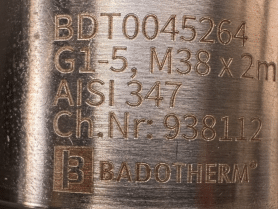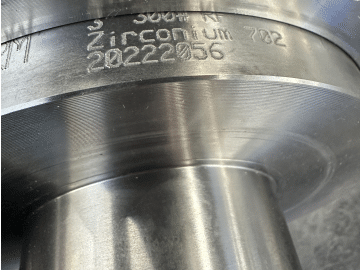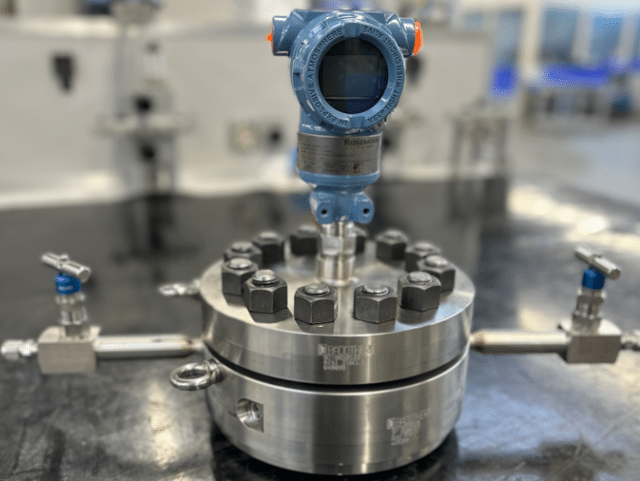Learning from a plant shut down… In many UREA applications, especially the high pressure synthesis phase, the preferred materials in terms of corrosion resistance are tantalum and zirconium. In these applications, the diaphragm seals used are of the extended type, to make the measurement flush to the process. Since there is no solid material available in tantalum to make the extension from, this type of seals is commonly made by means of an 316SS body covered with a tantalum lining or sleeve. This sleeve is put over the extended type seal and welded to the tantalum diaphragm AND welded to the 316SS flange body (see below drawing).
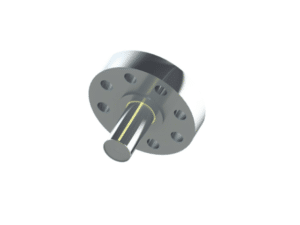
Whilst the material itself indeed shows no signs of corrosion, nor the welds between tantalum diaphragm and sleeve, the issue is there where the sleeve is welded to the body of the seal (see below images).
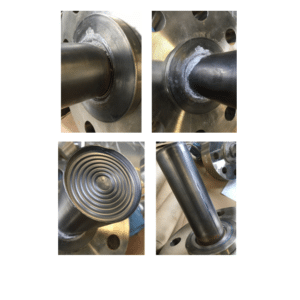
In our Case Study we focus on the risk areas of tantalum linings.
To mitigate these risks, the Badotherm solution is NOT to work with a sleeve, but only with full body material in zirconium or Safurex®.
The sleeve may initially be slightly more economical, but poses additional risk that one may not want to take. The zirconium or Safurex® diaphragm seals solution of Badotherm is long lasting and a robust solution. In many applications, they run over 5 years and longer.
In the same Case Study we will explain to you what the advantages are of a full body in zirconium.
More information:
Webpage: Fertilizer industry (Nitrogen, ammonia & UREA) – Badotherm
Datasheet: FSO EXT UREA type extended diaphragm slip on flange
Blog: Urea production – Badotherm

